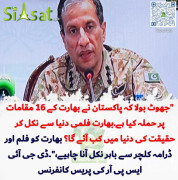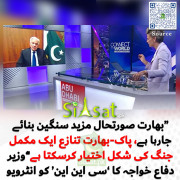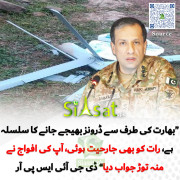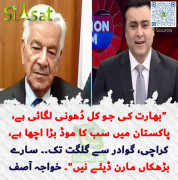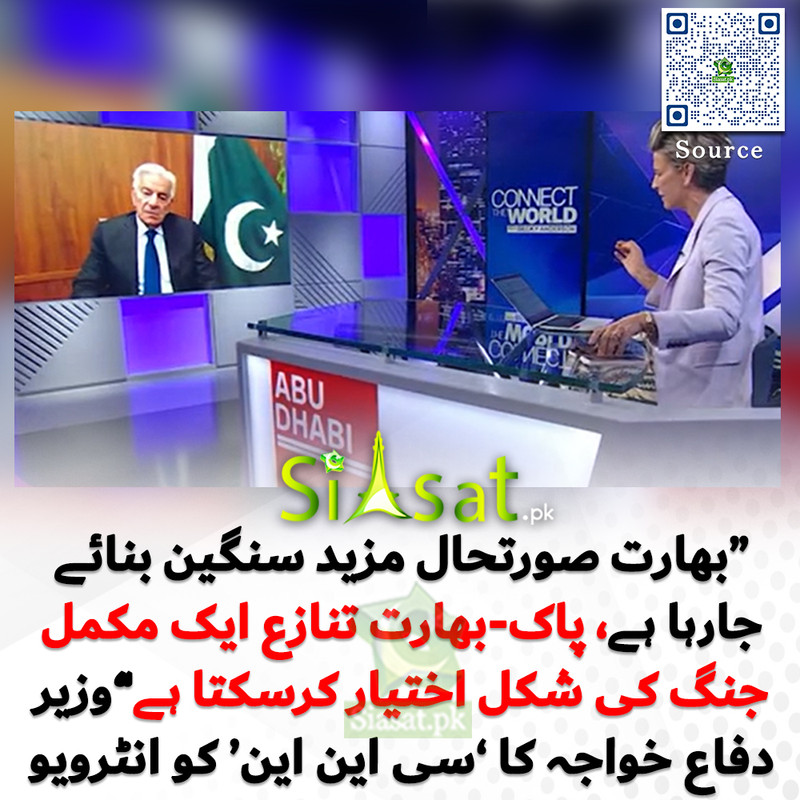A
You are using an out of date browser. It may not display this or other websites correctly.
You should upgrade or use an alternative browser.
You should upgrade or use an alternative browser.
More options
Promote your thread
A
arshad_lahore
Guest
A
arshad_lahore
Guest
A
arshad_lahore
Guest
A
arshad_lahore
Guest
A
arshad_lahore
Guest
A
arshad_lahore
Guest
A
arshad_lahore
Guest
A
arshad_lahore
Guest
A
arshad_lahore
Guest
A
arshad_lahore
Guest
A
arshad_lahore
Guest
A
arshad_lahore
Guest
A
arshad_lahore
Guest
A
arshad_lahore
Guest
A
arshad_lahore
Guest
A
arshad_lahore
Guest
A
arshad_lahore
Guest
A
arshad_lahore
Guest
Whose budget is it anyway?
Monday, June 15, 2009
Dr Pervez Tahir
There is a tradition of labeling budgets soon after presentation. Each budget has its winners and losers. These labels do give a rough and ready idea of who they are in public perception. The Government has given its own label of economic revival with a human face, an adaptation of the UNICEF slogan of adjustment with a human face in the early nineties. Initial reaction of the business community does not see much going for their revival. Beepers of ordinary folks on the channels are a far cry from a human face. For a change, the presentation of the budget did have the face of a woman, but not the kindness.
By its very nature, a budget is simply a statement of expenditures and receipts. Indeed the document recognized in law is called just that - Annual Budget Statement. But an analysis of who gains from the expenditure and who pays for it should bring forth a certain direction and strategy for change. The past was rightly blamed for making the public wait for the trickle down of growth. For now the people have to wait for the assistance from Friends of Pakistan and others to arrive. Development, as before, will be financed entirely by borrowing. Worse, the current expenditure of the federal government will exceed its net revenue receipts by Rs328 billion. The core fiscal deficit of 3.1 per cent of GDP agreed with the IMF remains intact. Projects and programmes in education, health, water supply and sanitation will be the add-ons to the deficit if and when the foreign assistance is received. That is why a sum of Rs157 billion has been given as a newly invented category of Other Development Programme. Even in the normal programme of Rs656 billion. An operational shortfall of Rs20 billion (Read no money) is another hole.
Recent international financial crisis resulted from special purpose vehicles and derivatives created by bankers in such complex ways that they lost sight of the toxicity being added to the system. As the stewardship of our finances is with international bankers, one hears with horror of the fall-back strategy of borrowing from the IMF at standby terms to arrange a kind of bridge finance until the concessional assistance arrives. If this assistance does materialize, its concessionality will be reduced. If it does not, the country will be stuck with the costly IMF loan and harsher conditionality. It is not even clear whether the IMF has the mandate to be drawn into development finance rather than its usual support for the balance of payments. The last G-20 summit did call for IMF to be softer in terms of its conditionality and was provided extra resources too, but what our Citibanker II has in mind may be an economists nightmare.
The Benazir Income Support Programme has been budgeted for, but it is in the nature of providing succour to those who suffering from the failure of the trickle-down effect. Health insurance, income tax relief to men and women and enhanced salaries and pensions also constitute a trickle. However, no real or substantial alternative to the trickle-down strategy has been furnished. The donor-driven PRSP-II and its nine chapters dubbed as nine point agenda is old wine in the old bottle. An approach to a tenth five-year plan calling for investment in the people has been circulated, but it does not find any place in the budget speech. A three-year budgetary framework has been published for the first time. It can become an effective instrument in linking planning and budgeting to avoid the waste of underutilized allocations in a resource-scarce economy. Again, it seems to have the usual go-it-alone flavour than a coordinated effort at outcome-based spending.
As a serious undertaking, the three year budgetary framework can make the oversight role of parliament much more effective than it presently is - which is nothing more than a a rubber stamp. The issue is that the budget-makers get all the time to prepare the document but parliament is not allowed the time to debate it threadbare. A three-year budgetary cycle would enable the preparation of the budget by the executive by March, followed by discussion in the relevant parliamentary committees and eventually parliament itself. However, this year will be like any other year, as is clear from the amount of time allowed for parliamentary debate. Non-political regimes keep the people at arms length and announce the budget as close to the end of June as possible. Their main interest is in July 1, the start of he financial year. Political and representative regimes make an attempt to present the budget to parliament early in June. Even a month is too short a time for any meaningful discussion. It is unfortunate that parliament will have only two weeks to make any contribution other than the approval of the budget.
Expensive and unreliable energy has been a greater factor in the cost of doing business than the high interest rate. Water, with an allocation twice as high, rather than energy is the biggest priority of the PSDP. This means that the burden of dealing with energy crisis is shifted to the private sector. Even here, the preference to rentals over the settling of the circular debt for immediate augmentation of supply last year showed misplaced priorities. The budget now has it mixed up again by emphasizing both of these and commissioning of nine new IPPs in 2009 to add 1,861 MW. The allocation for the Bhasha-Diamer Dam suggests that the work on it is not picking up at sufficient pace. The start in alternative energy is welcome but cannot be relied on for the crisis that looms. Energy conservation, now a growth industry in other countries, is not even mentioned. No major initiative on coal has been indicated either.
The budget corrects the neglect suffered by agriculture in the Musharraf-Aziz period, which not only reflects the change in the balance of political power but also the ground reality that quick, low resource-using growth can come only from agriculture. The sector gets greatest focus of policy incentives and PSDP allocations. Together, agriculture, livestock and water claim the bulk of the PSDP. The sector retains most of its subsidies - tubewells, for instance - and enhancement of others, such as the Benazir Tractor Scheme. The sector has also been spared the burden of income tax, despite significant additions to incomes following the rise in wheat support price. Thus the overall GDP growth of 3.3 per cent is sought to be achieved mainly through a push in agriculture to realize a target growth rate of 3.8 per cent. Agriculture growth is more pro-poor than nonagriculture. It should not, however, be forgotten that even agricultural growth may not automatically trickle down to the poor.
The adviser on finance started the run-up to the budget by showing his determination to tax the hitherto untaxed sectors. For a moment one thought the time perhaps had come to touch the sacred cows of agricultural incomes, property and capital gains, and services. The best time to tax is when the sector is doing well and the economy on the whole is on the upturn. It is a bad strategy to tax when the going is bad. Anyway, capital gains had already been given an exemption for two years. It took an unusual visit by our foreign minister to his country, in fact his own constituency Multan, to summon a meeting of his Farmers Association with the adviser on finance attending, to impress upon the latter the folly and futility of taxing agricultural incomes. The hype on property and services only provided the federal government to collect more from provincial domains by enhancing CVT and the outdated excises. Even the carbon tax is a replacement for PDL, not an environment-friendly innovation
Last but not the least, the budget of 2009-10 reflects the NFC of 1996, as modified by the then president in uniform. To say that a small matter of who should preside over the NFC delayed matters is to miss the whole point. The fear of a stalemate because of the fact that the provinces are sticking to their position, is only part of the explanation. The war on terror, which is now our war too, and its fall out in the form of IDPs and the recurring threat to public security, require centralized control over resources. The excess of current budget over revenues gives only a small indication of things to come. The NFC can wait until then.
On the whole, it is a budget oriented towards agriculture, though not necessarily the small farmer and the landless. While it does not make too many people happy, the number of those it makes unhappy is not very large either.
Monday, June 15, 2009
Dr Pervez Tahir
There is a tradition of labeling budgets soon after presentation. Each budget has its winners and losers. These labels do give a rough and ready idea of who they are in public perception. The Government has given its own label of economic revival with a human face, an adaptation of the UNICEF slogan of adjustment with a human face in the early nineties. Initial reaction of the business community does not see much going for their revival. Beepers of ordinary folks on the channels are a far cry from a human face. For a change, the presentation of the budget did have the face of a woman, but not the kindness.
By its very nature, a budget is simply a statement of expenditures and receipts. Indeed the document recognized in law is called just that - Annual Budget Statement. But an analysis of who gains from the expenditure and who pays for it should bring forth a certain direction and strategy for change. The past was rightly blamed for making the public wait for the trickle down of growth. For now the people have to wait for the assistance from Friends of Pakistan and others to arrive. Development, as before, will be financed entirely by borrowing. Worse, the current expenditure of the federal government will exceed its net revenue receipts by Rs328 billion. The core fiscal deficit of 3.1 per cent of GDP agreed with the IMF remains intact. Projects and programmes in education, health, water supply and sanitation will be the add-ons to the deficit if and when the foreign assistance is received. That is why a sum of Rs157 billion has been given as a newly invented category of Other Development Programme. Even in the normal programme of Rs656 billion. An operational shortfall of Rs20 billion (Read no money) is another hole.
Recent international financial crisis resulted from special purpose vehicles and derivatives created by bankers in such complex ways that they lost sight of the toxicity being added to the system. As the stewardship of our finances is with international bankers, one hears with horror of the fall-back strategy of borrowing from the IMF at standby terms to arrange a kind of bridge finance until the concessional assistance arrives. If this assistance does materialize, its concessionality will be reduced. If it does not, the country will be stuck with the costly IMF loan and harsher conditionality. It is not even clear whether the IMF has the mandate to be drawn into development finance rather than its usual support for the balance of payments. The last G-20 summit did call for IMF to be softer in terms of its conditionality and was provided extra resources too, but what our Citibanker II has in mind may be an economists nightmare.
The Benazir Income Support Programme has been budgeted for, but it is in the nature of providing succour to those who suffering from the failure of the trickle-down effect. Health insurance, income tax relief to men and women and enhanced salaries and pensions also constitute a trickle. However, no real or substantial alternative to the trickle-down strategy has been furnished. The donor-driven PRSP-II and its nine chapters dubbed as nine point agenda is old wine in the old bottle. An approach to a tenth five-year plan calling for investment in the people has been circulated, but it does not find any place in the budget speech. A three-year budgetary framework has been published for the first time. It can become an effective instrument in linking planning and budgeting to avoid the waste of underutilized allocations in a resource-scarce economy. Again, it seems to have the usual go-it-alone flavour than a coordinated effort at outcome-based spending.
As a serious undertaking, the three year budgetary framework can make the oversight role of parliament much more effective than it presently is - which is nothing more than a a rubber stamp. The issue is that the budget-makers get all the time to prepare the document but parliament is not allowed the time to debate it threadbare. A three-year budgetary cycle would enable the preparation of the budget by the executive by March, followed by discussion in the relevant parliamentary committees and eventually parliament itself. However, this year will be like any other year, as is clear from the amount of time allowed for parliamentary debate. Non-political regimes keep the people at arms length and announce the budget as close to the end of June as possible. Their main interest is in July 1, the start of he financial year. Political and representative regimes make an attempt to present the budget to parliament early in June. Even a month is too short a time for any meaningful discussion. It is unfortunate that parliament will have only two weeks to make any contribution other than the approval of the budget.
Expensive and unreliable energy has been a greater factor in the cost of doing business than the high interest rate. Water, with an allocation twice as high, rather than energy is the biggest priority of the PSDP. This means that the burden of dealing with energy crisis is shifted to the private sector. Even here, the preference to rentals over the settling of the circular debt for immediate augmentation of supply last year showed misplaced priorities. The budget now has it mixed up again by emphasizing both of these and commissioning of nine new IPPs in 2009 to add 1,861 MW. The allocation for the Bhasha-Diamer Dam suggests that the work on it is not picking up at sufficient pace. The start in alternative energy is welcome but cannot be relied on for the crisis that looms. Energy conservation, now a growth industry in other countries, is not even mentioned. No major initiative on coal has been indicated either.
The budget corrects the neglect suffered by agriculture in the Musharraf-Aziz period, which not only reflects the change in the balance of political power but also the ground reality that quick, low resource-using growth can come only from agriculture. The sector gets greatest focus of policy incentives and PSDP allocations. Together, agriculture, livestock and water claim the bulk of the PSDP. The sector retains most of its subsidies - tubewells, for instance - and enhancement of others, such as the Benazir Tractor Scheme. The sector has also been spared the burden of income tax, despite significant additions to incomes following the rise in wheat support price. Thus the overall GDP growth of 3.3 per cent is sought to be achieved mainly through a push in agriculture to realize a target growth rate of 3.8 per cent. Agriculture growth is more pro-poor than nonagriculture. It should not, however, be forgotten that even agricultural growth may not automatically trickle down to the poor.
The adviser on finance started the run-up to the budget by showing his determination to tax the hitherto untaxed sectors. For a moment one thought the time perhaps had come to touch the sacred cows of agricultural incomes, property and capital gains, and services. The best time to tax is when the sector is doing well and the economy on the whole is on the upturn. It is a bad strategy to tax when the going is bad. Anyway, capital gains had already been given an exemption for two years. It took an unusual visit by our foreign minister to his country, in fact his own constituency Multan, to summon a meeting of his Farmers Association with the adviser on finance attending, to impress upon the latter the folly and futility of taxing agricultural incomes. The hype on property and services only provided the federal government to collect more from provincial domains by enhancing CVT and the outdated excises. Even the carbon tax is a replacement for PDL, not an environment-friendly innovation
Last but not the least, the budget of 2009-10 reflects the NFC of 1996, as modified by the then president in uniform. To say that a small matter of who should preside over the NFC delayed matters is to miss the whole point. The fear of a stalemate because of the fact that the provinces are sticking to their position, is only part of the explanation. The war on terror, which is now our war too, and its fall out in the form of IDPs and the recurring threat to public security, require centralized control over resources. The excess of current budget over revenues gives only a small indication of things to come. The NFC can wait until then.
On the whole, it is a budget oriented towards agriculture, though not necessarily the small farmer and the landless. While it does not make too many people happy, the number of those it makes unhappy is not very large either.
A
arshad_lahore
Guest
Division among militants
Monday, June 15, 2009
Waqar Ahmed
The military operation has succeeded in defeating the insurgents by ejecting them from Buner, Dir and other adjoining areas within nine weeks. A majority of the Taliban have either been killed or have retreated form the battlefields. Lieutenant-General Nadeem Ahmed, chairman of the Special Support Group, said on June 6 that the Swat Taliban leaderships contacts with low-ranking commanders had been disrupted and the recruitment and training centres were no more operational, that their logistic dumps and ammunition had been destroyed and the flow of finances halted. Before him, Chief of Army Staff General Ashfaq Pervez Kayani had said on June 4 that the military had decisively turned the tide against the Taliban in Swat and adjoining district.
Some media reports have revealed intercepted conversation among the commanders of the militants, which shows that they have been completely demoralised in resisting the army. High-ranking commanders of the insurgents are threatening their own fighters in desperation. For example, some Taliban suicide bombers were dispatched to a local commander Hamzala from Haji Gul who said that the suicide bombers were not allowed to leave their position. He further said that anybody falling back from his position would face serious consequences. Haji Gul said that he would kill the person himself if he runs away from his position. Setting aside the threats of their high-ranking commanders, demoralised militants have been extremely pressurised, and after losing control over their concerned areas, they are running from their last bastions.
Latest reports indicate that a majority of the Taliban leaders and commanders belonging to the banned TNSM and the Swat TTP has been killed, captured or fled. A major failure of the militants of Swat has been the absence of motivated suicide bombers in the battlefield. In the recent past, a network for motivating and training suicide bombers existed in certain Taliban strongholds in Swat, but it seems that a majority of the young bombers sent to the valley and other districts of Malakand was not locals. They were either foreign fighters or Afghan refugees who have escaped to Afghanistan.
However, there are a number of reasons which have brought about a division among the militants. The local people became fed up with the criminal activities of the Taliban like beheadings, kidnappings and especially their tactics of torturing innocent people. They realised that Sharia was a pretext that the Taliban were using to impose a brutal system on the local population. The brutality of the Taliban was such that close to three million people fled their homes, choosing to stay in camps rather than under the Taliban. As things stand now, the Taliban are no longer in a position to misuse and exploit jihad in organising the insurgents.
Unlike the militants, Pakistans armed forces have been fully supported by the people of Pakistan. In wake of public backing to the military operations coupled with high morale in Pakistans security forces has created disunity and demoralisation among the militants. During house-to-house fighting in Mingora, soldiers fought boldly and did not care for their life. Meanwhile, commandos were air-dropped at various strongholds of the insurgents. With morale high, the armed forces succeeded in disrupting the supply lines of the militants and destroying their command and control system. This compelled militants to fight in the scattered forms and caused greater division among them.
Although backbone of the Malakand militants has been broken by the army, it is imperative that public support for the military operation be maintained. Ordinary people need to cooperate with security forces and agencies in detecting and capturing the top militant leaders who are working on the payroll of RAW and CIA with the sole aim to destabilise a nuclearised Pakistan for their common strategic agenda.
The writer is a freelance contributor.
Monday, June 15, 2009
Waqar Ahmed
The military operation has succeeded in defeating the insurgents by ejecting them from Buner, Dir and other adjoining areas within nine weeks. A majority of the Taliban have either been killed or have retreated form the battlefields. Lieutenant-General Nadeem Ahmed, chairman of the Special Support Group, said on June 6 that the Swat Taliban leaderships contacts with low-ranking commanders had been disrupted and the recruitment and training centres were no more operational, that their logistic dumps and ammunition had been destroyed and the flow of finances halted. Before him, Chief of Army Staff General Ashfaq Pervez Kayani had said on June 4 that the military had decisively turned the tide against the Taliban in Swat and adjoining district.
Some media reports have revealed intercepted conversation among the commanders of the militants, which shows that they have been completely demoralised in resisting the army. High-ranking commanders of the insurgents are threatening their own fighters in desperation. For example, some Taliban suicide bombers were dispatched to a local commander Hamzala from Haji Gul who said that the suicide bombers were not allowed to leave their position. He further said that anybody falling back from his position would face serious consequences. Haji Gul said that he would kill the person himself if he runs away from his position. Setting aside the threats of their high-ranking commanders, demoralised militants have been extremely pressurised, and after losing control over their concerned areas, they are running from their last bastions.
Latest reports indicate that a majority of the Taliban leaders and commanders belonging to the banned TNSM and the Swat TTP has been killed, captured or fled. A major failure of the militants of Swat has been the absence of motivated suicide bombers in the battlefield. In the recent past, a network for motivating and training suicide bombers existed in certain Taliban strongholds in Swat, but it seems that a majority of the young bombers sent to the valley and other districts of Malakand was not locals. They were either foreign fighters or Afghan refugees who have escaped to Afghanistan.
However, there are a number of reasons which have brought about a division among the militants. The local people became fed up with the criminal activities of the Taliban like beheadings, kidnappings and especially their tactics of torturing innocent people. They realised that Sharia was a pretext that the Taliban were using to impose a brutal system on the local population. The brutality of the Taliban was such that close to three million people fled their homes, choosing to stay in camps rather than under the Taliban. As things stand now, the Taliban are no longer in a position to misuse and exploit jihad in organising the insurgents.
Unlike the militants, Pakistans armed forces have been fully supported by the people of Pakistan. In wake of public backing to the military operations coupled with high morale in Pakistans security forces has created disunity and demoralisation among the militants. During house-to-house fighting in Mingora, soldiers fought boldly and did not care for their life. Meanwhile, commandos were air-dropped at various strongholds of the insurgents. With morale high, the armed forces succeeded in disrupting the supply lines of the militants and destroying their command and control system. This compelled militants to fight in the scattered forms and caused greater division among them.
Although backbone of the Malakand militants has been broken by the army, it is imperative that public support for the military operation be maintained. Ordinary people need to cooperate with security forces and agencies in detecting and capturing the top militant leaders who are working on the payroll of RAW and CIA with the sole aim to destabilise a nuclearised Pakistan for their common strategic agenda.
The writer is a freelance contributor.
-
-
-
-
نواز گونگا غائب
26 | FORUM
-
-
© Copyrights 2008 - 2025 Siasat.pk - All Rights Reserved. Privacy Policy | Disclaimer|























